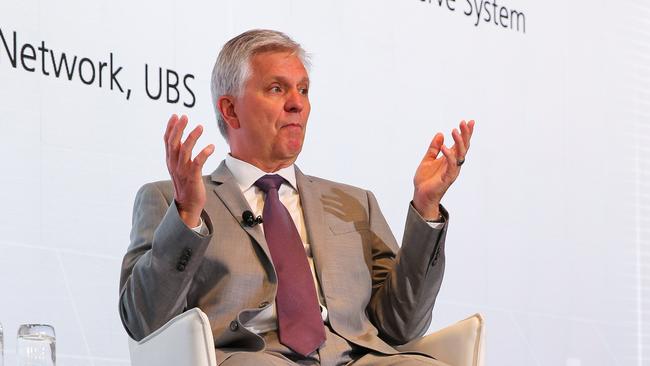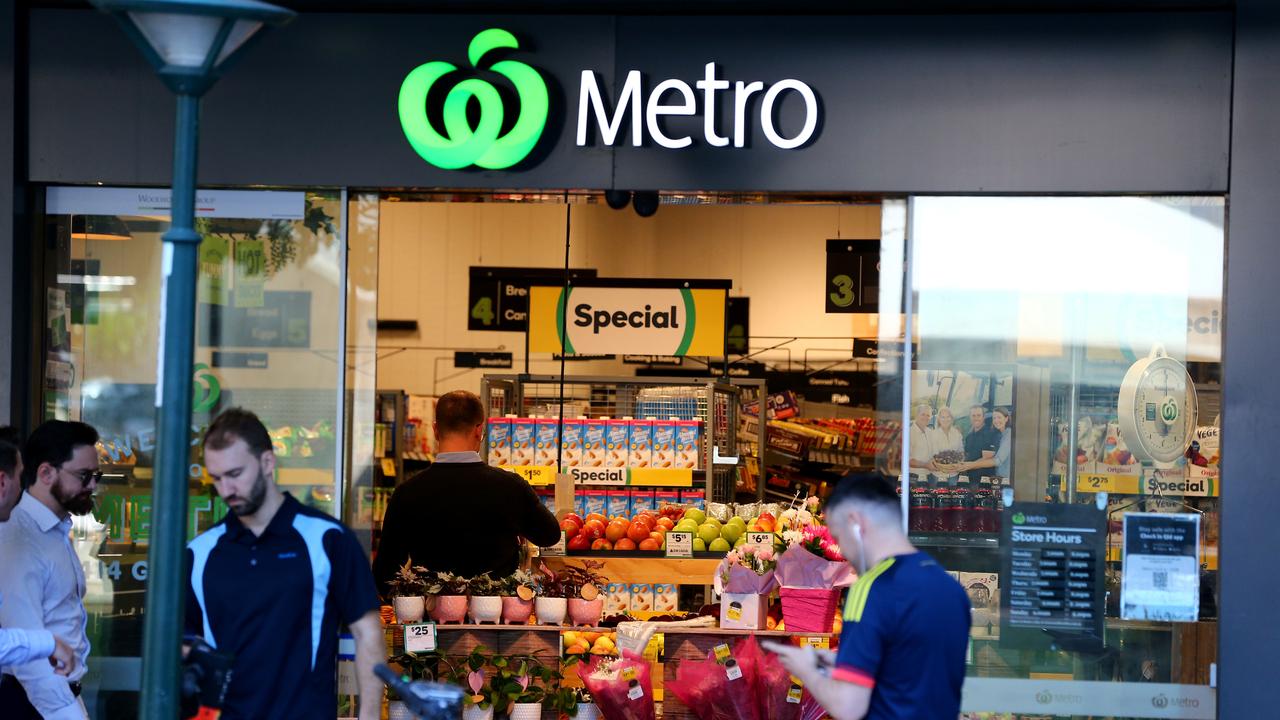Fears of a US market crisis on Citi’s mind
The fact that a major US bank is writing about the risk of the US bond market choking on debt issuance should be ringing alarm bells in Washington and markets.

Business
Don't miss out on the headlines from Business. Followed categories will be added to My News.
Could surging US public debt leave the US Treasury market vulnerable to a “full-blown crisis” akin to last year’s meltdown in the UK gilt market?
It’s one of the questions tackled by Citi’s top global strategists and economists in a report on “The Ever-Rising US Public Debt”.
The very fact that a major US bank is writing about the risk of the US bond market choking on debt issuance should be ringing alarm bells in Washington and markets.
In recent months financial markets have grappled with issues related to the US government’s bulging fiscal imbalances and rising debt. US government debt is expected to hit about 115 per cent of GDP over the next decade, requiring a staggering $US20 trillion ($30 trillion) of Treasury bond issuance to investors.
“While we judge that a full-blown adverse scenario remains unlikely, last year’s UK gilt crisis offers a cautionary tale,” Citi chief global economist Nathan Sheets says.
This adverse scenario would feature a sharp, unexpected deterioration in demand for Treasuries, causing a sharp rise in Treasury yields and risk premiums in credit and equity markets.
Given the dollar’s status as the global reserve currency, and the role of Treasuries in supporting it, these stresses would also likely be felt in financial markets abroad, he says.
Citi argues that the “most likely” scenario is that any discomfort with the US debt trajectory “eventually abates”, and any premiums the market requires to absorb bond issuance are modest.
“In this case, the core strengths of the US economy give investors the confidence to purchase Treasuries, notwithstanding the ongoing political noise,” Mr Sheets says.
“Similarly, the effects of high debt levels on economic performance are limited.”
The US economy still has deep resources and significant strengths – it’s the largest in the world and its growth engines have proved resilient in recent years, so the capacity to pay debt is high.
The US private sector is less indebted than in many similar countries, and US asset positions are strong.
The US dollar is still the world’s reserve currency, and the Treasury market offers investors a unique depth and range of instruments, plus the Fed’s independence gives an important safeguard against high inflation.
However, Citi also gives some weight to two more worrying scenarios.
Rising debt levels, while still viewed as sustainable, could start to create meaningful headwinds for the economy. Arguably, this is similar to what Japan has experienced in recent decades.
High debt levels could create uncertainties for the private sector, weighing on household and business spending. It might limit scope for fiscal support in periods of economic disruption.
Debt-service payments might crowd out more productive types of public spending.
The third scenario canvassed by Citi is the “emergence of a full-blown crisis that would do serious damage to the Treasury market and global financial markets”.
“Such an episode could resemble last fall’s stresses in the gilt market, but also be more sustained,” Mr Sheets says. Of the three scenarios, he places the lowest probability on an “outright disruption.”
Apart from the impressive economic strength and resources of the US economy, he says the Federal Reserve is sure to step in as the Bank of England did last year, buying gilts on an unlimited basis.
Last September, the newly-seated Truss government in the UK proposed unfunded tax cuts at a time when rising government issuance and high inflation were already roiling markets.
This announcement further stoked anxieties after the Bank of England, just a day before, had confirmed its intention to transition from quantitative easing to quantitative tightening.
The resulting combination of pressures pushed gilt yields sharply higher, forcing major liability-driven investors to become forced sellers of gilts/linkers to meet collateral and margin calls.
Amid this flood of selling, the market was illiquid, and the BoE was forced to intervene as a market maker of last resort. The BoE’s intervention ultimately proved successful. The risk premium on gilts had receded significantly by early November, but gilts continued to embed a premium.
“While such action might pose operational challenges for the Fed, its commitment to financial stability would require some response,” Mr Sheets says.
The US regional banking crisis in March caused amplified volatility in yields as well as uncertainty around future Fed action. Ultimately, the Fed – acting in concert with other US agencies – was able to backstop the system without rate hikes being reversed or QE being restarted.
“The good news is that, in retrospect, the gilt crisis looks to have reflected a near perfect storm of events that seems unlikely to be replicated elsewhere,” Citi strategists say.
“The bad news is that ‘unknown unknowns’ are by their nature unpredictable, and recent years have brought unrelenting surprises.
“As such, we interpret the UK gilt crisis as a cautionary tale for both the UK and other countries in the years ahead.”
Federal Reserve board of governors member Christopher Waller said it best when he described the jump in bond yields as an “earthquake”.
Taking the analogy a step further, we might not know just yet what damage has been done.
Sharemarkets have had a nice rebound as the US 10-year bond yield has retreated from a 16-year high.
Fed officials have acknowledged that higher rates have tightened financial conditions enough to lessen the need for rate hikes, US economic data have disappointed and slightly weaker than expected average hourly earnings data in the US non-farm payrolls report was helpful.
But this “bad news is good news” zone for the policy outlook may be “quite narrow”, according to JPMorgan chief market strategist Marko Kolanovic.
The policy implications are reassuring for now, but it’s “difficult to distinguish between a healthy slowdown and the initial stages of recession without the benefit of hindsight.”
Falling bond yields and the dovish central bank meetings are being interpreted by equity markets as a positive in the near term, but equities will “soon revert back to an unattractive risk-reward”.
The Fed is set to remain higher for longer, valuations are rich, earnings expectations remain too optimistic, pricing power is waning, profit margins are at risk and the slowdown in revenue growth is set to continue, Mr Kolanovic said.
Originally published as Fears of a US market crisis on Citi’s mind



